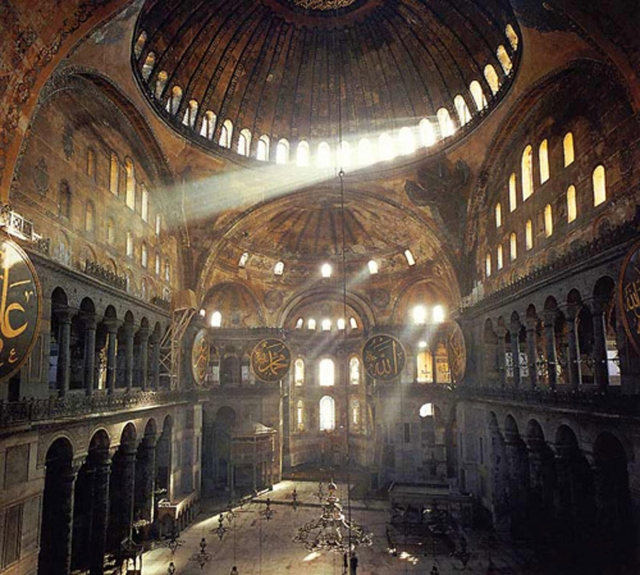The original dome was too flat, and fell not many years after construction, during an earthquake. The replacement was rounder, but also fell in a quake. Its replacement survives in part today, but parts of that third dome fell in two different medieval quakes.
The interior engineering with its semidomes etc was a brilliant leap from then-existing Roman Empire forms, and it remained the largest dome in the world for centuries, I think until modern times, and for a while may have been the world's tallest structure as well. The Pantheon in Rome actually has a wider span as a single dome, and was not surpassed until Brunelesci (sp?) built his famous dome in Florence during the Renaissance. The Pantheon also is the oldest surviving true dome; the only older domes which come to mind offhand are the corbelled domes built by the Mycenaeans, the so-called Treasury of Atreus being the best-known example.



